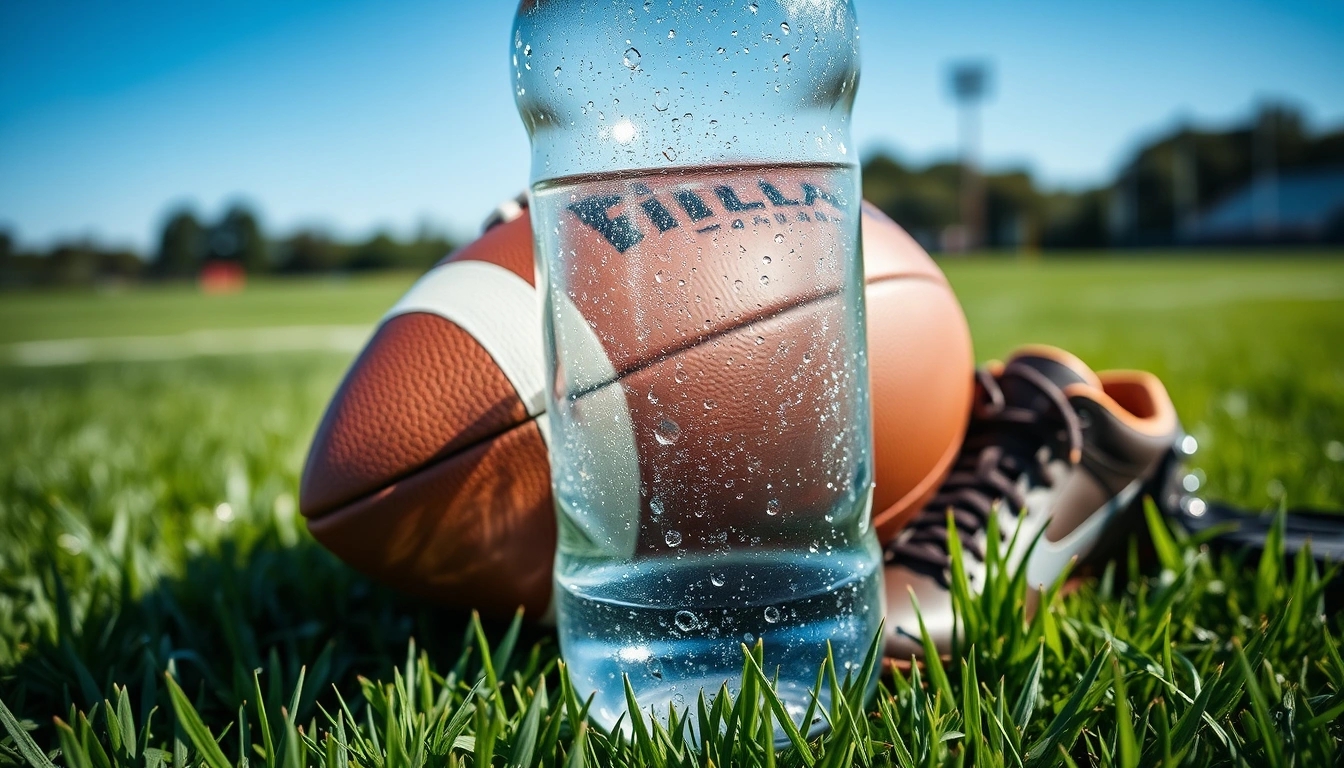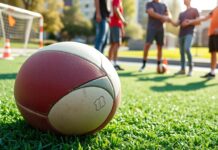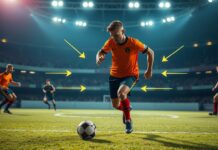Alright, let’s cut to the chase: hydration is not just some boring health lecture mumbo jumbo—it’s absolutely crucial for football players who want to crush it on the field. You might think, “Hey, I drink when I’m thirsty, isn’t that enough?” Well, not really. Thirst is actually a late warning sign that your body’s already running low on fluids. So, if you’re waiting till you’re parched, you’re already behind the hydration curve.
Why does it matter so much? Because water is the unsung hero behind everything you do in football. From keeping your muscles firing correctly, to regulating your body temperature when you’re sweating buckets, to helping your brain stay sharp and focused—hydration touches every aspect of your game. Without it, your stamina tanks, your reaction time slows, and good luck recovering after the match.
| Hydration Impact | Effect on Performance |
|---|---|
| Muscle Function | Prevents cramps and maintains strength |
| Temperature Regulation | Keeps you cool under pressure |
| Cognitive Focus | Improves decision-making and reaction time |
| Recovery | Speeds up healing and reduces fatigue |
Now, spotting dehydration isn’t always as obvious as a red card. Some signs sneak up on you like fatigue, dizziness, or even a headache—easy to blame on anything else, right? But these are your body waving a little red flag. If you’re feeling sluggish or your mouth’s dry, don’t just brush it off.
- Early signs of dehydration: dry lips, dark urine, muscle cramps
- Serious symptoms: confusion, rapid heartbeat, fainting
Before you even lace up your cleats, pre-game hydration is your secret weapon. The rule of thumb? Start sipping fluids about two hours before kickoff—nothing crazy, just steady. Aim for about 500 ml (around 17 oz) so your body has time to absorb it. And don’t forget to top off with a small drink 15 minutes before the whistle blows.
During the game, it’s tempting to guzzle whatever’s on hand, but pacing is key. Try to take small sips every 15-20 minutes. If you’re sweating buckets, plain water might not cut it—electrolytes like sodium and potassium are the MVPs here, helping you keep your energy and muscle function intact.
During-Game Hydration Tips:- Sip 150-250 ml every 15-20 minutes- Use electrolyte drinks if sweating heavily- Avoid gulping large amounts at once (can cause cramps)
Post-game? Don’t just flop on the couch and call it a day. You’ve lost a ton of fluids and salts, so rehydrating properly helps you bounce back faster. Water is great, but pairing it with some carbs and protein will speed up muscle repair and replenish energy stores.
So, water or sports drinks? Here’s a quick breakdown:
| Drink Type | Pros | Cons |
|---|---|---|
| Water | Hydrates well, zero calories, cheap | Doesn’t replace electrolytes lost in sweat |
| Sports Drinks | Replenishes electrolytes, provides energy | Can be high in sugar, expensive |
Before you swear by one or the other, remember: your hydration needs change with the weather, intensity, and your own sweat rate. Hot, humid days? You’ll need more fluids and electrolytes. Cold weather? You might not feel thirsty, but your body still needs fluid.
Bottom line? Hydration is like your secret weapon—use it wisely, and you’ll see the difference in every sprint, tackle, and goal. Ignore it, and well… good luck making it through the game without feeling like a soggy noodle.
Stay sharp, stay hydrated, and keep smashing it on the field!
Why Hydration Matters in Football
Alright, let’s get real about something that often slips under the radar when you’re out there grinding on the pitch: hydration. It’s not just about chugging water because your coach told you to or because you’re parched after a sprint. Hydration is the secret sauce that keeps your muscles firing, your body temperature in check, and your brain sharp enough to pull off those slick moves. Without it? Well, let’s just say your game might take an unexpected nosedive.
First off, think about your muscles like high-performance engines. They need fuel, sure, but also a steady flow of fluids to keep everything running smoothly. Water helps transport nutrients and oxygen to your muscle cells, and flushes out the waste products that build up during those intense tackles and sprints. When you’re dehydrated, your muscles get cranky — cramps, stiffness, and fatigue sneak in, making you slower and less precise. Not exactly what you want when the clock’s ticking and the ball’s at your feet.
| Hydration Impact | Effect on Football Performance |
|---|---|
| Muscle Function | Maintains strength, prevents cramps, supports endurance |
| Temperature Regulation | Keeps body cool, prevents overheating and heat exhaustion |
| Mental Focus | Enhances concentration and decision-making |
Now, let’s talk temperature regulation because football isn’t played in a vacuum. You’re sweating buckets in the summer heat, or maybe freezing your toes off in winter. Your body relies heavily on water to cool itself down through sweating. Without enough fluids, your body’s thermostat goes haywire — you risk overheating, which can lead to heat stroke or just feeling completely wiped out. And nobody wants to be that player who’s gasping for air on the sidelines while their teammates keep pushing.
- Tip #1: Don’t wait till you’re thirsty. By then, you’re already on the back foot.
- Tip #2: Sip fluids consistently, especially during breaks or halftime.
- Tip #3: Electrolytes matter — sodium, potassium, magnesium — they keep the fluid balance right and prevent those nasty cramps.
Here’s the kicker: hydration isn’t just physical, it’s mental. When you’re dehydrated, your brain takes a hit. Reaction times slow, focus blurs, and decision-making goes out the window. Imagine missing that crucial pass or misreading the opponent’s move just because your brain’s running low on fuel. It’s frustrating, and frankly, avoidable.
Hydration Quick Facts:- Losing just 2% of your body weight in fluids can reduce performance by up to 20%.- Dehydration affects cognitive functions like attention and memory.- Proper hydration speeds up recovery post-match.
So, next time you’re gearing up for a match, remember: water isn’t just a sidekick; it’s your MVP. Treat it that way, and your body — and your game — will thank you.
Signs You’re Not Drinking Enough
Let’s get real for a sec—dehydration doesn’t always wave a big red flag at you. Sometimes, it sneaks in like a pesky defender you didn’t see coming, and before you know it, your performance takes a nosedive. Knowing the early warning signs of dehydration can save your game and keep you on your feet instead of sprawled out on the bench wondering what just happened. So, how do you spot it before it wrecks your rhythm? Let’s break it down.
First off, the classic “dry mouth” and “thirst” cues are the obvious ones. But here’s the kicker—by the time you feel thirsty, you’re already behind the hydration curve. It’s like realizing you forgot your cleats when you’re halfway to the pitch. So, don’t wait for thirst to hit you like a linebacker.
- Fatigue and Dizziness: Feeling wiped out quicker than usual? That sluggishness might be dehydration creeping in. Your body’s low on fluids, and your brain’s not getting the oxygen it needs. Dizzy spells aren’t just for roller coasters.
- Dark Urine: A quick pee check is one of the easiest ways to gauge your hydration. If your urine looks like apple juice, that’s a red flag. Aim for pale yellow, like lemonade—not that you should be sipping lemonade in the middle of a game… unless it’s got electrolytes.
- Headaches and Muscle Cramps: Those nagging headaches or sudden cramps? Yep, dehydration loves to mess with your muscles and brain. It’s your body’s way of waving a white flag.
| Symptom | What It Means | What To Do |
|---|---|---|
| Dry Mouth | Initial dehydration sign | Take small sips of water immediately |
| Fatigue | Fluid loss affecting energy | Rest briefly and hydrate |
| Dizziness | Low blood volume | Stop activity, hydrate, seek help if severe |
| Dark Urine | Concentrated urine, dehydration | Increase fluid intake throughout the day |
| Muscle Cramps | Electrolyte imbalance | Drink electrolyte-rich fluids, stretch gently |
But hey, it’s not just about symptoms you can feel or see. Sometimes, dehydration plays mind games. You might notice your focus slipping, decision-making getting fuzzy, or reaction times slowing down. In a sport like football, where split-second choices can make or break a game, that’s a big deal.
Here’s a little pro tip: don’t rely solely on how you feel. Start tracking your hydration like a coach tracks stats. Carry a water bottle, set reminders on your phone, or use apps designed to nudge you when it’s time to drink. Because honestly, even the best players forget to hydrate until it’s too late.
- Morning Check: Look at your urine color first thing after waking up.
- Pre-Game Ritual: Drink 16-20 ounces of water 2 hours before kickoff.
- During Game: Sip 7-10 ounces every 15-20 minutes when possible.
Remember, dehydration isn’t just about feeling thirsty or tired. It’s a silent performance killer that creeps into your muscles, brain, and stamina. Spotting the signs early means you can tackle it head-on and keep playing hard. So, next time you feel a little off, check your hydration first—your body will thank you.
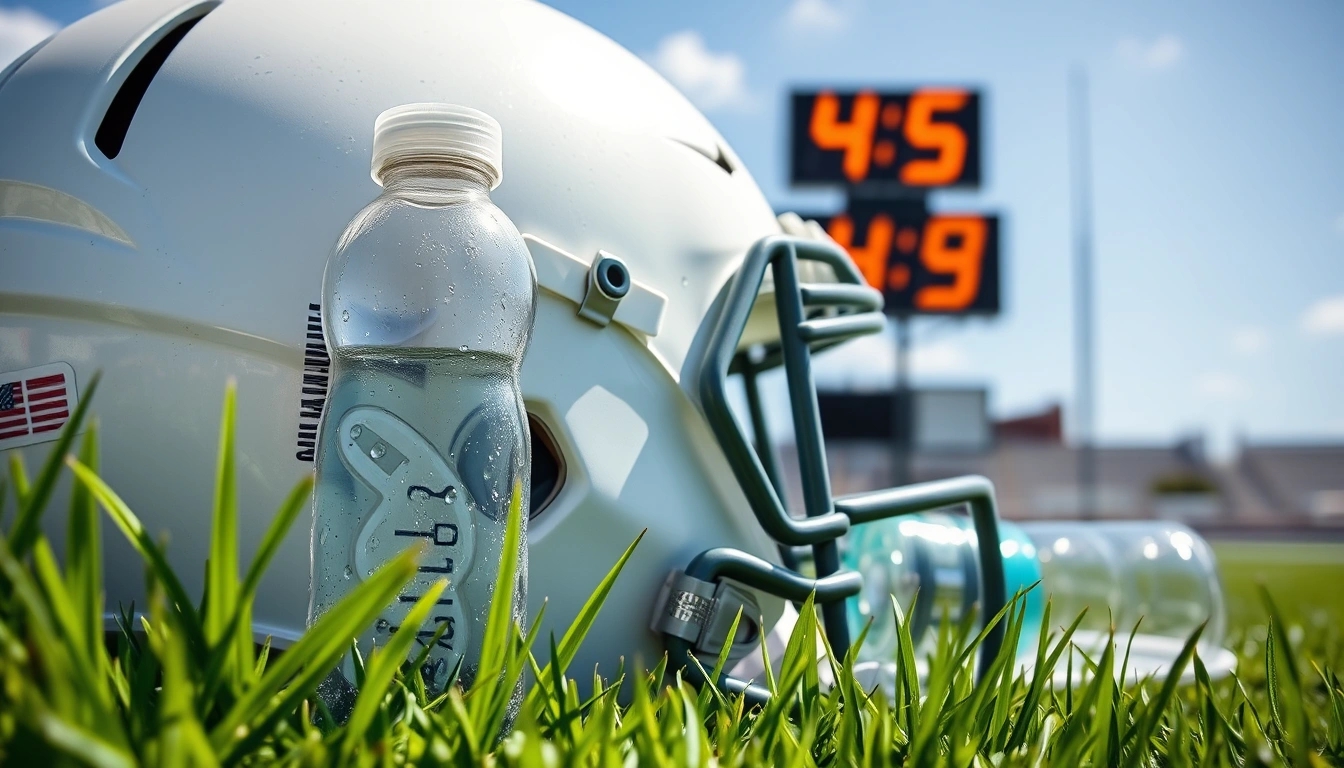
Pre-Game Hydration Strategies
Alright, so you’re gearing up for the big match, and you know hydration’s crucial—but how much should you actually be gulping down before you even step on the pitch? Let’s cut through the noise and get real about pre-game hydration. It’s not just about chugging a gallon of water five minutes before kickoff (spoiler alert: that’s a rookie move). Instead, it’s about smart, timed sipping that keeps cramps and fatigue at bay while keeping you sharp.
First off, the golden rule: start hydrating early. Ideally, you want to begin topping up your fluids at least 2 to 3 hours before game time. This gives your body a chance to absorb and distribute the water properly. Down about 500ml (roughly two cups) during this window. Don’t just slam it all at once—pace yourself. Your bladder will thank you, trust me.
| Time Before Game | Recommended Fluid Intake | Why? |
|---|---|---|
| 3 hours | ~500ml (2 cups) | Allows absorption and hydration without discomfort |
| 15-20 minutes | ~200-300ml (1 cup) | Top off hydration, prevent dry mouth |
Now, don’t ignore that last 15-20 minute window before the whistle blows. Another 200-300ml here helps keep your mouth moist and your muscles ready to fire. But beware—overdoing it can leave you feeling bloated or, worse, needing a bathroom break mid-game (awkward!).
- Tip 1: Avoid sugary drinks right before the game. They might give you a quick buzz, but the crash? Not so fun.
- Tip 2: If you’re sweating buckets during warm-ups, consider a sports drink with electrolytes instead of plain water to keep your salt levels balanced.
- Tip 3: Don’t wait until you’re thirsty to drink—that’s already a sign you’re behind the hydration curve.
Let’s be honest, sometimes you just forget to hydrate properly. Maybe you’re too amped up or distracted by last-minute pep talks. Happens to the best of us. But here’s a quick reality check: dehydration sneaks up on you and can wreck your game faster than a bad tackle. Muscle cramps, sluggishness, and foggy focus? No thanks.
Quick Hydration Checklist Before Game:- Start sipping water 2-3 hours ahead.- Drink 500ml steadily, not all at once.- Top off with 200-300ml 15 minutes before kickoff.- Consider electrolyte drinks if sweating heavily.- Avoid sugary or caffeinated drinks pre-game.
In the end, pre-game hydration is about balance, timing, and listening to your body. It’s not rocket science, but it does require a bit of discipline. So next time you’re lacing up those boots, remember: hydrating smart is just as important as your drills and tactics. Your muscles, brain, and overall stamina will thank you—and hey, cramps and fatigue can take a hike.
During-Game Fluid Intake
Alright, let’s get real about what you’re sipping on while you’re out there grinding through those intense 90 minutes on the pitch. Hydration during the game isn’t just about gulping down water whenever you feel like it—it’s a strategic dance that can make or break your performance. You can’t just chug a bottle every chance you get; that’ll have you feeling bloated or worse, cramping up like an old man trying to run a marathon.
First off, the golden rule: small, frequent sips are your best friend. Think of it like fueling a car—you don’t dump a whole tank of gas in at once, right? Same goes for your body. Aim to take in about 150-250 ml (roughly half to one cup) every 15-20 minutes. It sounds like a lot when you’re hustling and panting, but trust me, your muscles and brain will thank you.
- Why so often? Because your body is losing fluids steadily through sweat, and if you wait too long, you’re basically playing catch-up with dehydration.
- What about the electrolytes? Ah, the unsung heroes. Sodium, potassium, magnesium, and calcium keep your nerves firing, muscles contracting, and prevent cramps from sneaking up on you.
| Electrolyte | Role in Performance | Sources During Game |
|---|---|---|
| Sodium | Maintains fluid balance, prevents hyponatremia | Sports drinks, salty snacks |
| Potassium | Regulates muscle contractions | Bananas, sports drinks |
| Magnesium | Supports energy production, reduces cramps | Sports drinks, nuts (pre/post game) |
| Calcium | Muscle function and nerve signaling | Dairy, fortified drinks (pre/post game) |
Now, I know some of you might be thinking, “Just water, man. Sports drinks? Nah, too sugary.” Fair point. Plain water is fantastic for staying hydrated, but during those long, sweaty matches, you gotta replace what you’re losing. Sweat isn’t just water—it’s a cocktail of electrolytes. If you’re only drinking water, you risk diluting your blood sodium levels, which can lead to that nasty condition called hyponatremia (fancy word for low salt in your blood). Basically, it’s like watering down your engine oil—your system just won’t run right.
Here’s a quick tip: if you’re sweating buckets or the game’s in blazing heat, grab a sports drink with about 6-8% carbs and electrolytes. Anything more concentrated and you might get an upset stomach or sluggishness—nobody wants that mid-dribble.
Practical Sip Schedule for a 90-Minute Game:- 0-15 mins: 150 ml water or sports drink- 15-30 mins: 150 ml water or sports drink- Halftime: 250-300 ml sports drink + light snack (if possible)- 45-60 mins: 150 ml water or sports drink- 60-75 mins: 150 ml water or sports drink- Last 15 mins: Sip as needed, focus on water to avoid stomach issues
One last thing—don’t wait until you’re thirsty to drink. By then, you’re already a step behind. Thirst is a late warning light, not an early alert. So be proactive, sip regularly, and keep those electrolytes balanced. Your brain will stay sharp, your legs won’t feel like jelly, and you might just dodge the dreaded cramp monster.
In short: sip smart, sip often, and respect those electrolytes. Your game depends on it.
Post-Game Rehydration Tips
Alright, so you’ve just slammed through a grueling 90 minutes on the pitch, sweat pouring like a busted faucet, lungs burning, muscles screaming—now what? First off, don’t just flop on the bench and call it a day. Recovering like a pro means more than just catching your breath; it’s about replenishing what you lost out there, and fast. Hydration isn’t just water gulping—it’s a strategic move to bounce back quicker and get ready for the next match without feeling like a zombie.
Let’s get real: during a game, you lose a ton of fluids and electrolytes through sweat. If you don’t replace those, you’re basically asking your body to run on empty. That’s why post-game hydration is crucial. But here’s the kicker—not all fluids are created equal. Plain water is great, but it doesn’t cover all your bases. You need a combo of fluids and nutrients to really hit the reset button.
- Step 1: Start with fluids immediately. Don’t wait until you feel thirsty because, by then, you’re already behind. Aim to drink about 16-24 ounces (roughly 500-700 ml) of water within the first 30 minutes after the game.
- Step 2: Electrolytes matter. Sodium, potassium, magnesium—these little guys keep your muscles firing and your nerves sharp. Grab a sports drink or a natural electrolyte replacement to restore these minerals. If you’re thinking, “Sports drinks? Aren’t those just sugar bombs?” Well, yeah, some are, so pick wisely. Look for options with balanced electrolytes and moderate sugar.
- Step 3: Don’t forget carbs and protein. Your muscles have been working overtime, breaking down glycogen stores. Refuel with a snack or meal rich in carbs and protein within two hours post-game to kickstart muscle repair and energy restoration.
| What to Replenish | Why It Matters | Sources |
|---|---|---|
| Fluids | Restore hydration and blood volume | Water, coconut water, diluted sports drinks |
| Electrolytes | Maintain nerve and muscle function | Sports drinks, bananas, nuts, salty snacks |
| Carbohydrates | Replenish glycogen stores | Fruit, whole grain bread, pasta, rice |
| Protein | Repair muscle tissue | Chicken, eggs, yogurt, protein shakes |
Now, here’s a little nugget of wisdom: don’t just slam a giant bottle of water all at once. Your body can only absorb so much at a time, and chugging too fast might just have you running to the bathroom instead of the locker room. Sip steadily and keep it coming over the next few hours. And if you’re feeling wiped out, a cold compress or ice bath can help reduce inflammation, but remember, hydration is the foundation.
Oh, and before you roll your eyes thinking “hydration, hydration, hydration”—yes, it’s that important. Skipping this step is like driving a car without oil. You might get away with it once or twice, but eventually, things will break down. So, treat your body like the high-performance machine it is. Rehydrate smart, refuel right, and you’ll be back on your feet, ready to crush the next game.
In short: don’t just sweat it out—drink it out. Your future self on the field will thank you.
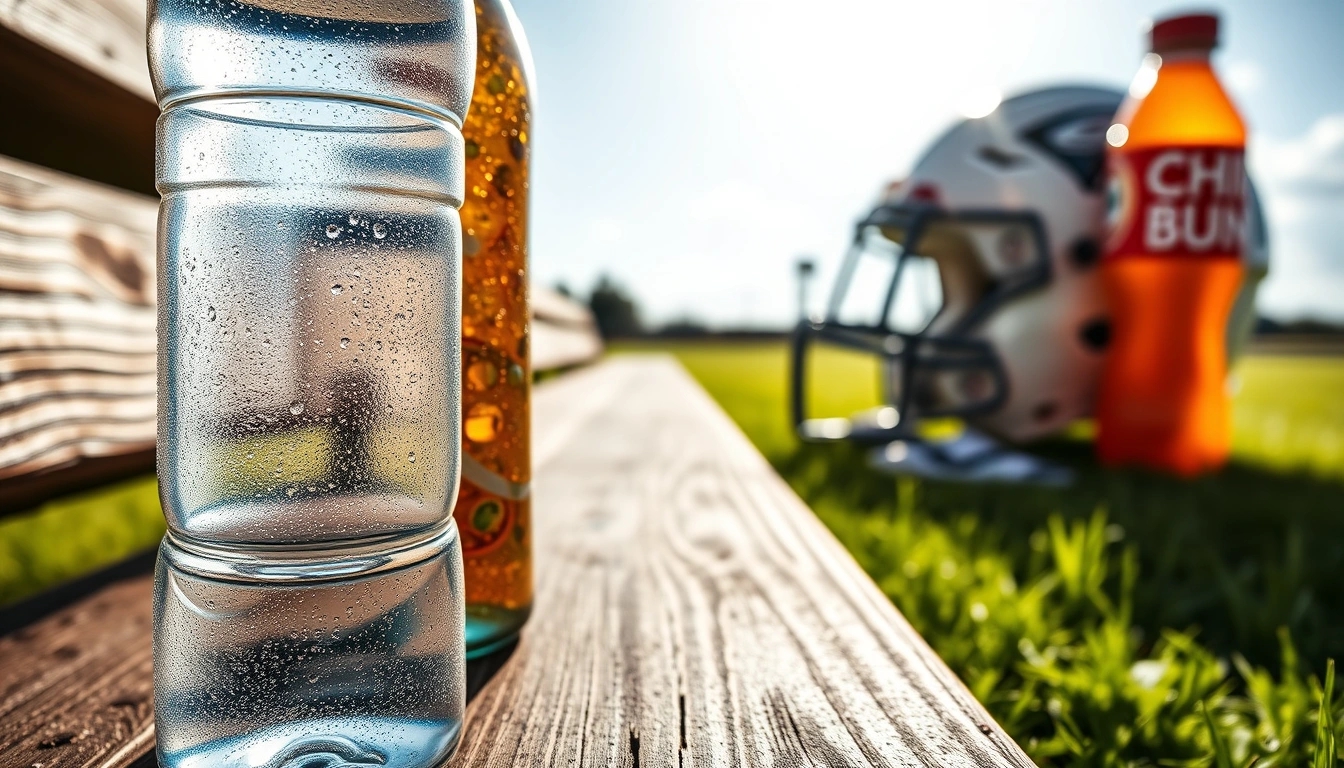
Water vs. Sports Drinks: What’s Best?
Alright, let’s get real about hydration on the field — the age-old debate: plain water or those flashy electrolyte-packed sports drinks? Both have their fans, their quirks, and their moments to shine. But which one should you be grabbing depending on the game situation? Buckle up, because it’s not as black and white as you might think.
First off, water is the OG hydrator. It’s simple, pure, and does the job for most folks under normal conditions. If you’re in a casual scrimmage or a light practice session lasting less than an hour, water is your best bud. It keeps you hydrated without any extra calories or sugars messing with your energy levels. Plus, it’s cheaper and always available—no fancy packaging needed.
- Pros of Water: Zero calories, no additives, easy on the stomach, and widely accessible.
- Cons of Water: Doesn’t replace lost electrolytes like sodium, potassium, or magnesium during intense sweating.
Now, enter the flashy contender: sports drinks. These babies are designed to replace electrolytes lost in sweat and provide a quick energy boost through sugars. If you’re pushing through a high-intensity game or a long, brutal training session where sweat is pouring buckets, sports drinks can be a lifesaver. They help maintain your electrolyte balance, preventing cramps and fatigue that water alone might not fix.
| Game Situation | Recommended Drink | Why? |
|---|---|---|
| Light Practice < 1 Hour | Water | Hydration needs are moderate, no electrolyte depletion. |
| Intense Game > 1 Hour | Sports Drinks | Replenishes electrolytes and provides energy. |
| Post-Game Recovery | Sports Drinks or Water + Balanced Meal | Rehydrates and restores nutrients lost. |
But hold your horses — sports drinks aren’t perfect. The sugar content can be a double-edged sword. Too much sugar can cause an upset stomach or even lead to a sugar crash later. And if you’re just chilling on the sidelines or playing a light game, that sugar might be totally unnecessary. Also, some folks just don’t like the taste or feel weird after gulping them down.
Here’s a little insider tip: if you’re sweating buckets in hot, humid weather, sports drinks can be a game-changer. But if it’s a cool day or you’re only out there for 30 minutes, plain water will do just fine. Also, don’t forget that you can always DIY a hydration mix at home with water, a pinch of salt, and a splash of juice — saving money and avoiding the artificial stuff.
- Quick takeaway: Match your hydration strategy to your activity level and environment.
- Don’t overdo sports drinks: They’re supplements, not replacements for water.
- Listen to your body: If you feel bloated or jittery, maybe dial back on the sugary drinks.
In the end, hydration isn’t just about quenching thirst — it’s about keeping your muscles firing, your brain sharp, and your energy steady throughout the game. So, next time you’re packing your gear, think twice about what goes in that bottle. Water might be the humble hero, but sports drinks have their place too — just don’t let them hog the spotlight all the time.
Stay hydrated, stay sharp, and most importantly, enjoy the game!
Hydration Myths Busted
Alright, let’s cut through the noise and bust some of those pesky hydration myths that are probably messing with your football game plan. You’ve heard them all before, right? “Drink eight glasses a day,” “If you’re thirsty, you’re already dehydrated,” or the classic “Sports drinks are just sugar bombs.” Well, hold onto your water bottles, because we’re diving in headfirst.
- Myth #1: You Must Drink Exactly 8 Glasses of Water Daily
Look, the “8×8 rule” (eight 8-ounce glasses) is a nice round number, but it’s not gospel. Your hydration needs depend on your size, activity level, weather, and even what you ate for lunch. A 6-foot linebacker sweating buckets in August isn’t going to get by on the same amount as a benchwarmer chilling on the sidelines. So, don’t blindly follow this one-size-fits-all advice. - Myth #2: If You’re Thirsty, You’re Already Dehydrated
This one’s a bit dramatic. Thirst is your body’s way of saying, “Hey, I could use some water,” but it doesn’t mean you’re running on empty just yet. Sure, waiting too long to hydrate can hurt your performance, but a little thirst here and there? Totally normal. The trick is to drink consistently, not just when your mouth feels like the Sahara. - Myth #3: Sports Drinks Are Just Sugary Junk
Yes, some sports drinks are loaded with sugar, but they also pack electrolytes like sodium and potassium that your body desperately needs during intense games. Plain water won’t replace these lost salts, so sports drinks have their place — especially if you’re sweating buckets or playing for longer than an hour. Just don’t chug a whole bottle like it’s soda; moderation is key.
Now, here’s a quick table to help you decide when to choose water or sports drinks during your football hustle:
| Situation | Hydration Choice | Why? |
|---|---|---|
| Pre-game warmup (less than 1 hour) | Water | Simple hydration, no extra calories needed |
| During game (high intensity, over 60 minutes) | Sports drinks | Replenish electrolytes & energy |
| Post-game recovery | Water + balanced meal/snack | Restore fluids and nutrients for muscle repair |
And here’s a nugget of wisdom: don’t overhydrate. Chugging gallons of water thinking you’re doing your body a favor? That can backfire big time, leading to hyponatremia — a fancy term for dangerously low sodium levels. That’s no joke and can sideline you faster than a sprained ankle.
In a nutshell, hydration isn’t some strict formula you memorize and follow blindly. It’s about listening to your body, adjusting to conditions, and knowing when to swap your water bottle for a sports drink. So next time someone tells you to “just drink water and you’re good,” you can smile knowingly and say, “Well, it’s a bit more complicated than that.” Because, honestly, hydration is a science — but it’s also a bit of an art.
Stay sharp, stay hydrated, and keep those myths in the locker room where they belong.
Tracking Your Hydration: Simple Tools and Tips
Let’s be honest—keeping tabs on how much you’re drinking and sweating out can feel like launching a NASA mission. But here’s the good news: monitoring your hydration doesn’t have to turn into a full-blown science experiment or a spreadsheet nightmare. You don’t need fancy gadgets or a PhD in fluid dynamics to stay on top of your game. Just a few straightforward tricks and a little awareness can make all the difference.
- Use a Reusable Water Bottle with Markings: One of the easiest hacks is grabbing a water bottle that has volume markers. This way, you can eyeball how much you’ve consumed during practice or a match without doing mental math. If you’re aiming for about 500ml every 30 minutes during intense play, these markers keep you honest.
- Set Reminders on Your Phone: If you’re the type who forgets to drink until you’re parched, alarms or hydration apps can be your best friends. They nudge you to take a sip regularly—no more waiting until your tongue feels like sandpaper.
Now, on the flip side, tracking output (yes, we’re talking about pee here) is surprisingly useful. Sounds weird, but your urine color is a pretty reliable hydration gauge. Pale straw color? You’re golden. Dark yellow or amber? Time to gulp down some water, buddy. Just don’t get obsessed—if you’re peeing every 5 minutes, you might be overdoing it.
| Hydration Indicator | What to Look For | What It Means |
|---|---|---|
| Urine Color | Pale yellow to clear | Well hydrated |
| Urine Color | Dark yellow to amber | Dehydrated, drink up |
| Thirst Level | None to mild | Hydration is adequate |
| Thirst Level | Strong thirst | Body needs fluids ASAP |
If you want to get a little more old-school, jotting down your daily fluid intake in a simple notebook or an app can help you see patterns over time. Maybe you realize you’re crushing water during training but totally slacking off on rest days. Knowing this helps you adjust without making it a chore.
By the way, don’t forget sweat rates! Okay, this one can get a little nerdy, but it’s practical if you’re serious about performance. Weigh yourself before and after practice (in minimal clothes), and the difference in weight roughly equals the fluid lost through sweat. One pound lost about 16 ounces (roughly 500ml) of fluid you need to replace. Simple math, right? But hey, if you don’t want to weigh yourself like a lab rat, just remember: heavy sweating means you gotta drink more.
- Keep a Towel Handy: If your shirt’s soaked, you’re losing fluids fast.
- Note Environmental Factors: Hot or humid days? Your fluid needs spike. Cold days? You might forget to drink but still lose fluids.
In short, tracking hydration doesn’t have to be rocket science. Use what’s easy and accessible: water bottles with markers, your phone’s reminders, and your body’s own signals. Stay tuned in, and you’ll avoid that dreaded cramp or foggy brain on the field without turning into a walking lab report.
Pro Tip: Combine these simple tools with a bit of common sense and you’ll keep your hydration game strong—no sweat (well, maybe a little sweat). Cheers to staying sharp and hydrated!
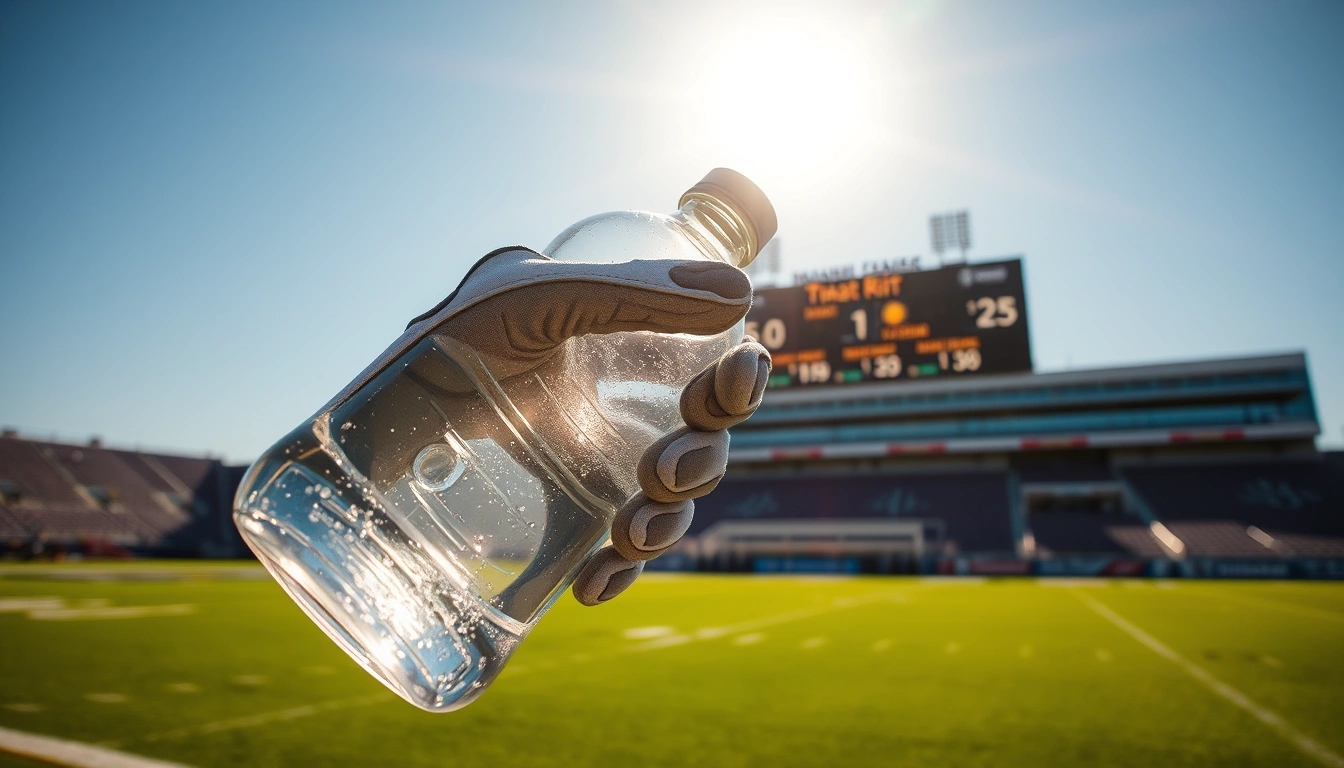
Hydration and Weather: Adjusting Your Game Plan
Alright, let’s talk about something every football player and coach secretly dread but can’t ignore: how the weather messes with your hydration game. You think you’ve got your water bottle game on point, but then Mother Nature decides to throw a curveball — whether it’s blazing heat, sticky humidity, or freezing cold — and suddenly your usual routine might as well be ancient history.
First up, heat and humidity. When the sun is blazing and the air feels like a wet blanket, your body is basically screaming for more fluids. You sweat buckets, and it’s not just water you’re losing — electrolytes like sodium and potassium are flying out too. If you’re just chugging plain water, you might actually do more harm than good by diluting those precious salts. This is when sports drinks or electrolyte supplements become your best friends. And don’t even think about waiting until you’re thirsty — by then, you’re already lagging behind.
| Weather Condition | Hydration Challenge | Recommended Action |
|---|---|---|
| Hot & Dry | Rapid fluid loss, dehydration risk | Drink water + electrolytes frequently, avoid caffeine/alcohol |
| Hot & Humid | Reduced sweat evaporation, increased electrolyte loss | Hydrate early, use sports drinks, wear breathable gear |
| Cold Weather | Blunted thirst response, risk of dehydration unnoticed | Drink regularly even if not thirsty, warm fluids help |
Now, flip the coin to cold weather. It’s sneaky because you don’t feel as thirsty, and your body’s thirst mechanism takes a nap. But guess what? You’re still losing fluids through breath and sweat under all those layers. Plus, the cold can reduce your urge to drink, which means dehydration can sneak up on you like a silent defender. Pro tip: set reminders to sip fluids regularly, and don’t shy away from warm drinks like herbal teas or warm water with lemon — they count too!
- Tip 1: Monitor your urine color — pale yellow means you’re on the right track.
- Tip 2: Weigh yourself before and after practice to estimate fluid loss.
- Tip 3: Adjust fluid intake based on weather conditions — no one-size-fits-all.
Honestly, it’s a bit of a balancing act. Overhydration can lead to hyponatremia (fancy word for low sodium), which is just as dangerous as dehydration. So don’t just guzzle gallons thinking it’s a magic fix. Pay attention to your body’s signals, but also be proactive — especially when the weather is playing tricks on you.
In the end, smart hydration in football isn’t just about gulping water. It’s about knowing what the weather’s throwing at you and adjusting your game plan accordingly. Whether you’re sweating buckets under a scorching sun or freezing your tail off in the cold, staying hydrated is your secret weapon to keep stamina high and brain sharp.
So, next time the forecast looks wild, remember: hydrate smart, adapt fast, and don’t let the weather bench you!
Frequently Asked Questions
- Why is hydration so crucial for football players?
Think of your body as a high-performance engine; water is the fuel that keeps it running smoothly. Proper hydration helps regulate your body temperature, supports muscle function, and keeps your focus razor-sharp during those intense matches. Without enough fluids, fatigue and cramps can sneak in, sabotaging your game.
- How can I tell if I’m not drinking enough water?
Dehydration doesn’t always shout—it often whispers with subtle signs like dry mouth, dizziness, or dark urine. If you’re feeling sluggish or your muscles cramp unexpectedly, it’s a red flag that your body’s waving a hydration SOS. Catch these early to stay ahead of the game.
- When should I start hydrating before a game?
Hydration is a pre-game warm-up you can’t skip. Start sipping water steadily about two hours before kickoff to top off your fluid reserves. Avoid gulping down large amounts right before the whistle; steady sipping is like tuning your body’s hydration dial just right.
- What’s the best way to stay hydrated during the game?
During those grueling 90 minutes, small and frequent sips are your best friend. Electrolyte-rich drinks can be a game-changer, helping replace salts lost through sweat and keeping your energy levels high. Think of it as refueling your battery while you’re still running.
- Should I drink water or sports drinks after playing?
Post-game, it’s all about recovery. Water is perfect for rehydration, but if you’ve sweated buckets, sports drinks with electrolytes can speed up replenishing lost nutrients. Mixing both can be like a tag team, helping you bounce back faster for your next match.
- Are there common hydration myths I should ignore?
Absolutely! One big myth is that you should only drink when you’re thirsty. By the time thirst hits, you’re already behind on hydration. Another misconception is that sports drinks are always better than water—they’re not, especially if you’re not sweating heavily. Knowing the facts keeps your hydration game strong.
- How can I easily track my hydration without overthinking it?
Keep it simple: carry a water bottle, note how often you refill, and pay attention to your urine color—it’s a surprisingly good hydration indicator. Apps and smart bottles can help, but your body’s signals are the best guide.
- Does weather really affect how much I should drink?
Big time! Hot and humid days crank up your sweat rate, meaning you need to drink more to stay hydrated. Cold weather can trick you into drinking less, but dehydration still happens. Adjust your fluid intake like a pro to match Mother Nature’s mood swings.

